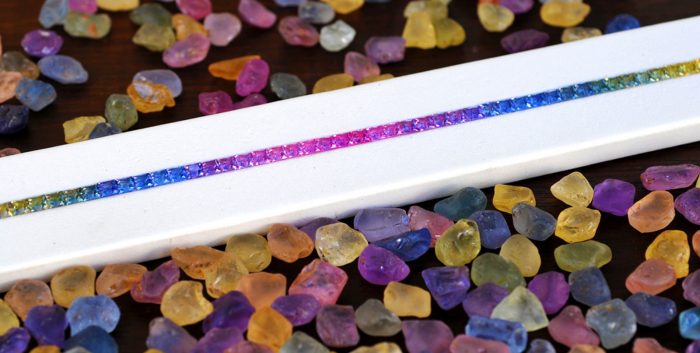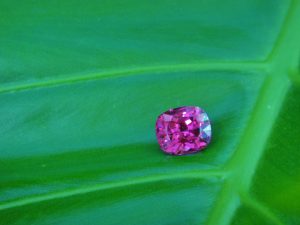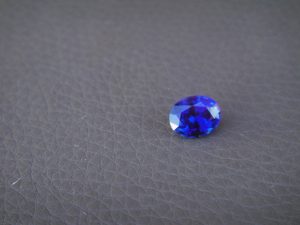From the Latin “gemma” literally meaning”precious stone”, the term “gem” has recently replaced all its predecessors such as “fine stone”, “precious stone” and especially “semi-precious stone”.
Il est en effet considéré comme plus juste et désigne mieux toute matière minérale (et quelques-unes organiques) répondant à des critères d’esthétismes qui leur confèrent une certaine valeur.
All those crirerias which allow identifying the stone are major factors as many traders use the stone’s origin as the value can then vary by up to three times.
 The “gemstone quality” stone will be appreciated at first sight by two methods: the first one being the unaided eye, the second with the help of a magnifying glass. The first observation, by the unaided eye will appreciate the overall aspect of the stone; this , according to the popular criterias: the color, the clarity, the size and finally the weight (the famous 4C in English: Color , Clarity, Cut and Carat).
The “gemstone quality” stone will be appreciated at first sight by two methods: the first one being the unaided eye, the second with the help of a magnifying glass. The first observation, by the unaided eye will appreciate the overall aspect of the stone; this , according to the popular criterias: the color, the clarity, the size and finally the weight (the famous 4C in English: Color , Clarity, Cut and Carat).
Another essential point is to be able to gauge the homogeneity of the color and the saturation (let’s say the depth) as well as the absence of inclusions visible to the eye which influence its value.
The quality of its size: the accuracy of its proportions, which if they are respected will optimize its brightness, and finally its weight, which value is exponential, that is to say that a sapphire of 4 carats is not worth 4 times the price of a sapphire of 1 carat of an equivalent quality.
 The second method is to access the details which are inaccessible to the eye, but with a magnifying glass, a x10, the classic way, but now with a x20 that found its place in all gemologist’s kit. In 90% of the cases, these tools are sufficient to identify a gem, its inclusions; there can be cracks, veils; besides some synthetic stones will be characterized by inclusions different from the natural ones.
The second method is to access the details which are inaccessible to the eye, but with a magnifying glass, a x10, the classic way, but now with a x20 that found its place in all gemologist’s kit. In 90% of the cases, these tools are sufficient to identify a gem, its inclusions; there can be cracks, veils; besides some synthetic stones will be characterized by inclusions different from the natural ones.
Inclusions, above all, make it possible to define their treatment, an essential task for estimating the true value and, if possible, the geographical origin which has a great influence on the value of a stone. This is essential for the stones coming from Madagascar because some were sold for a long time as being Sri Lankan whereas they were from Ilakaka, or rubies like Burmese for those of Didy,a mine which has been discovered in 2012 in the north of the country, and very recently, in 2016, for sapphires from the Ambatondrazaka deposit that are very similar to those of the renowned Kashmir.
Their similarity to these historical sources is the basis for the growing recognition of the gems of the Red Island.
All criterias allowing to identify stones are more than necessary knowing the fact that gem dealers or operators are often betting the on the origin and in consequences could triple the valueof one stone.
That’s the reason why Colorline promotes the Malagasy stone and its origin with the help of well-known scientist like Vincent Pardieu and Richard Hughes.
For more informations regarding the gems origin , we recommend you to visit their website, and have a look to our references on our shop.